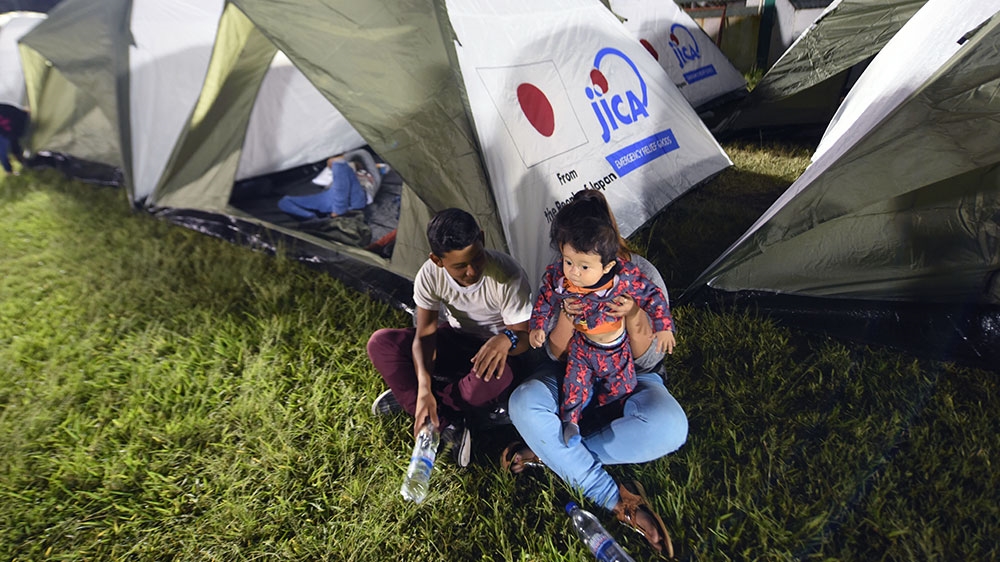Guatemala’s Fuego volcano eruption forces 4,000 to evacuate
Guatemala City – More than 4,000 people living in communities around the Fuego volcano in the Guatemalan department of Escuintla were forced to evacuate their homes late on Sunday as the volcano erupted once again this year.
“It was tremendous, we could not sleep,” said Victor Hernandez, a 38-year-old farmer and ranch worker from the village of El Rancho, El Rodeo, Escuintla.
“We had spent the day watching and listening to the volcano,” Hernandez told Al Jazeera.
“We were horrified because of what had happened the last time. We were worried what could happen,” he added, referring to a June eruption that killed nearly 200 people.
The National Coordination for Disaster Reduction of Guatemala, commonly known as CONRED, arrived along with the Guatemalan armed forces in El Rancho around 1:00am local time to evacuate Hernandez, his wife and three children, and the other roughly 62 families from the village.
CONRED began advising residents of the pending eruption hours before the volcano, known as the Volcano of Fire, began spewing ash across the highlands of Guatemala. They had warned residents of the possibility of evacuation.
Those evacuated were taken to the football stadium and to public school buildings in the municipality of Escuintla.
 |
| Residents of several communities nearby the erupting Fuego volcano, stay at a temporary shelter in Escuintla department, 35 km south of Guatemala City [Johan Ordonez/AFP] |
Raul Gonzalez, a 31-year-old coffee farmer from the community of La Trinidad, Escuintla, and member of the La Union Huistla Coffee Cooperative, which sits at the base of the volcano, was in the fields when representatives from arrived to warn the community.
“At first a few people did not want to evacuate,” Gonzalez told Al Jazeera. “But they all ended up leaving throughout the night.”
According to Gonzalez, residents largely organised the evacuations.
“When we saw that the situation was getting more dangerous, we evacuated through our own means,” Gonzalez told Al Jazeera. “CONRED said that buses would arrive to evacuate the people, but when I left at 10pm, there were not any buses from them.”
‘We don’t want to return’
The last major eruption was on June 3, producing ash and lahars that buried the villages of El Rodeo and San Miguel Los Lotes.
That eruption killed at least 194 people, injured hundreds and caused the evacuation of 3,100 people from the surrounding area. More then 230 remain missing. The eruption also destroyed nearly 8,500 hectares of crops, including those of La Trinidad.
 |
| A view of the Fuego Volcano erupting, as seen from Escuintla, Guatemala on November 19, 2018 [Carlos Alonzo/AFP] |
Hernandez’s house was among those damaged by the eruption. He also lost the crops he had to sustain the family.
CONRED and the Guatemalan government faced widespread criticism in June for failing to advise residents quickly enough.
“Before we were not warned of the eruption and given time to leave,” Gonzalez told Al Jazeera. “Now we know. At least we have a place to come and sleep.”
After the most recent eruption, Hernandez told Al Jazeera that he and his family no longer wished to return home.
“We live in an area that is at high risk,” Hernandez told Al Jazeera. “We do not want to return, but the government obliging us to return to El Rodeo because they are not giving us any other place to live.”




